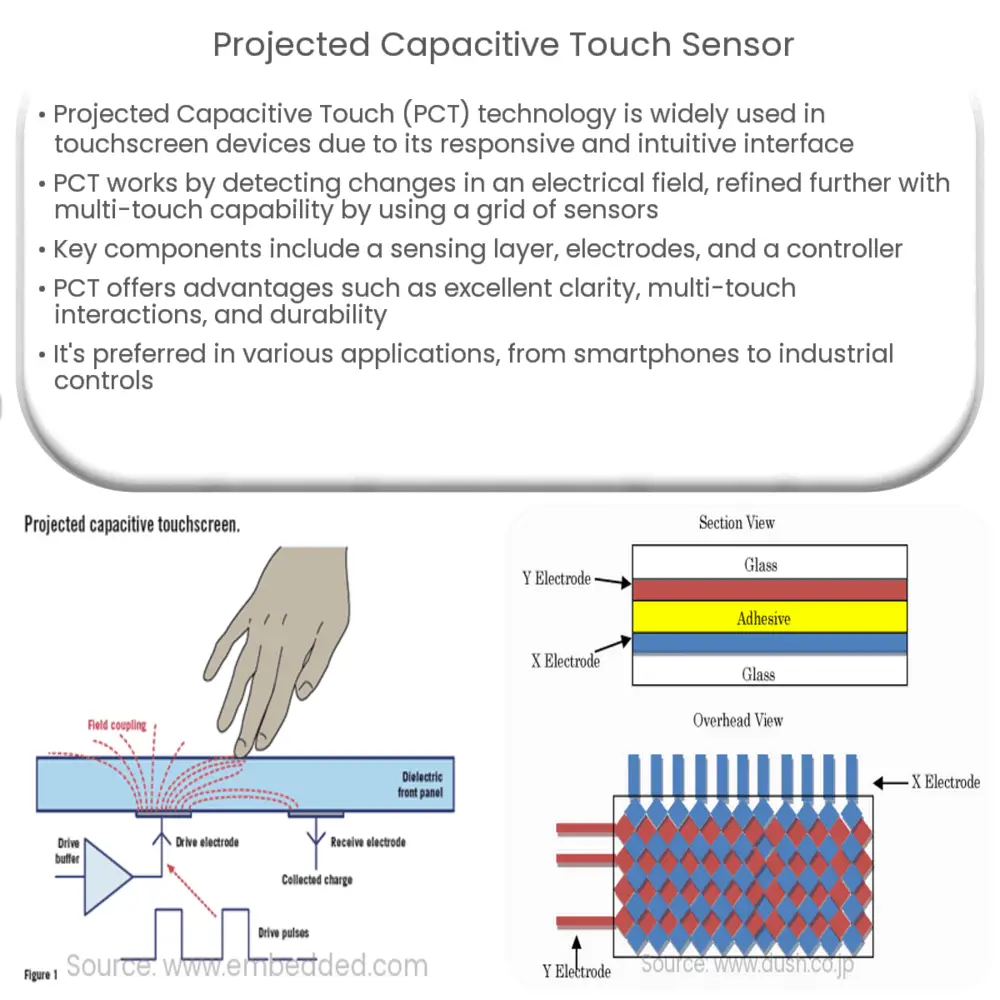Explore the fundamentals of Projected Capacitive Touch (PCT) technology, its advantages, applications, and its role in modern touch-based devices.

Understanding Projected Capacitive Touch Sensors
Projected Capacitive Touch (PCT) technology is a variant of capacitive touch technology, which has gained widespread adoption in modern touchscreen devices. This technology provides a more responsive and intuitive interface, enabling seamless interaction with various digital devices.
The Basics of Capacitive Sensing
At the heart of PCT technology lies the principle of capacitive sensing. Capacitive sensing works by detecting changes in an electrical field using a conductive object, often a human finger. When a finger approaches or touches the capacitive touch screen, it alters the localized electrostatic field. This change is then registered as a touch event, allowing the device to respond accordingly.
Projected Capacitive Touch Technology
Projected capacitive touch technology refines this process even further. Instead of a single capacitive sensor, PCT systems use a grid of rows and columns with a separate sensor at each intersection. This allows the system to accurately track multiple touch points simultaneously, a feature known as multi-touch capability.
Components of a PCT System
-
Sensing Layer: The most critical part of a PCT system is the sensing layer. This layer, often made of a transparent conductive material like Indium Tin Oxide (ITO), is where the touch events occur.
-
Electrodes: Connected to the sensing layer are electrodes that form a grid. Each intersection creates a capacitance node, which forms the basis for touch detection.
-
Controller: The controller interprets changes in the electrical field on the sensing layer, turning these changes into signals that the device’s processor can understand.
Types of PCT: Self and Mutual Capacitance
PCT systems typically operate in two modes: self-capacitance and mutual capacitance. In self-capacitance, the capacitance is measured individually at each electrode. It is highly sensitive and can detect even the lightest touch. However, it does not handle multi-touch well. In contrast, mutual capacitance measures the capacitance between row and column electrodes. It enables precise multi-touch tracking but is less sensitive than self-capacitance.
Advantages of Projected Capacitive Touch Technology
Projected Capacitive Touch technology offers numerous advantages over other touch technologies. Firstly, it provides excellent clarity, as it does not require additional layers that can degrade the image quality. Secondly, it offers multi-touch capability, allowing for more sophisticated user interactions such as zooming, pinching, and rotating. Thirdly, PCT technology is highly durable and resistant to environmental factors such as dust and water.
Applications of Projected Capacitive Touch Technology
PCT technology is widely used in various sectors due to its robustness, reliability, and versatility. Some of these applications include:
-
Smartphones and Tablets: PCT is the touch technology of choice for high-end smartphones and tablets, offering a seamless user experience.
-
Industrial Controls: In industrial environments, PCT touch screens provide reliable operation even in harsh conditions.
-
Kiosks and ATMs: The durability and precision of PCT technology make it ideal for public touch screen devices such as kiosks and ATMs.
-
Automotive Systems: Many modern vehicles use PCT touch screens for infotainment systems, providing drivers and passengers with intuitive controls.
Conclusion
In conclusion, Projected Capacitive Touch technology is a crucial component in the rise of modern touch-based devices. Its ability to deliver a highly responsive, multi-touch interface, combined with durability and resistance to environmental factors, makes it the preferred choice in many applications, from smartphones to industrial controls. As touch interfaces continue to evolve, we can expect PCT technology to remain at the forefront of these advancements, providing users with an ever-improving interactive experience.

